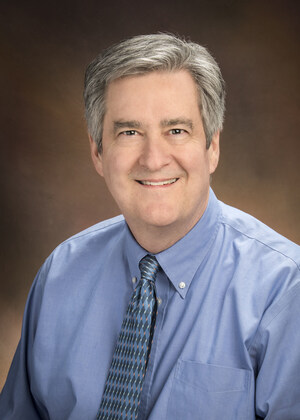New Stem Cell Found in Lung, May Offer Target for Regenerative Medicine
--CHOP/Penn Team: New Type of Cell Multiplies after Lung Injury--
PHILADELPHIA, March 1, 2018 /PRNewswire-USNewswire/ -- Newly identified stem cells in the lung that multiply rapidly after a pulmonary injury may offer an opportunity for innovative future treatments that harness the body's ability to regenerate. Writing today in the journal Nature, scientists describe cells that could become a new tool to treat lung diseases across the lifespan, from premature infants to the elderly.
Researchers from Children's Hospital of Philadelphia (CHOP) and the Perelman School of Medicine at the University of Pennsylvania focused on the alveoli—tiny compartments in the lung in which gas exchange occurs, as oxygen is taken up by the blood and carbon dioxide is removed. First in mouse models, then in humans, the study team identified a new cell lineage, which they called alveolar epithelial progenitor (AEP) cells.
"These cells sits quietly, but poised, in the lung until an injury activates them to proliferate and differentiate," said co-first author David B. Frank, MD, PhD, a pediatric cardiologist at CHOP. "If we can learn to manipulate the biological signals in this process, we may be able to regenerate lung tissue in patients."
Leading the research team was Edward E. Morrisey, PhD, director of the Penn Center for Pulmonary Biology and scientific director of Penn's Institute for Regenerative Medicine. Morrisey said "One of the most important places to better understand lung regeneration is the alveoli. To better understand these delicate structures, we have been mapping the different types of cells within the alveoli." He added that "understanding cell-cell interactions should help us discover new players and molecular pathways to target for future therapies."
The study team identified the new stem cells, first in mouse models, then in humans. They found that this cell system is evolutionarily conserved across separated species: AEPs share similar characteristics in both mice and humans. The underlying genes code for a similar set of proteins and respond to a similar set of signals—allowing researchers to investigate specific biological mechanisms in mice with relevance to how these cells function in humans. It also allowed them to perform experiments in organoid models—three-dimensional cell cultures that simulated specific ways that lungs function in living lower organisms.
Lung development in general, and alveoli in particular, are important to the evolution of life on earth, as one of the key steps allowing early animals to adapt to breathing oxygen on land. In our own early development, alveoli are also crucial in our transition from fluid respiration in the womb to preparing to breathe outside air at birth. In fact, if this normal development is short-circuited in premature births, infants with underdeveloped lungs may suffer a severe, even fatal disability, called bronchopulmonary dysplasia.
In the current study, the researchers studied how mice responded to lung injury caused by influenza virus. They discovered mechanisms by which alveolar cells are sensitive to Wnt signals, an important and powerful stem cell signaling pathway. Wnt signals, along with another set of signals called Fgf signals, act on the normally quiescent AEP cells in the lung to orchestrate their response to injury. Those AEP cells multiply rapidly and differentiate into alveolar cells, thereby regenerating lung tissue.
The researchers aim to translate their findings into eventual treatments for lung diseases in both children and adults. "As we have seen during this influenza season, lung damage from viruses and inflammation can be devastating," said Frank. "However, we now understand how the alveolar epithelial niche regenerates following injury. With this information, we may able to design pathway-specific modifiers or cell-based therapies to treat lung damage."
The AEP findings could lay the foundation for new treatments for children with BPD, adults with chronic obstructive pulmonary disease, or anyone with severe lung damage from influenza. Frank suggests the knowledge might even inform future tissue engineering treatments for premature babies or patients needing lung transplantation.
Given that respiration is intimately involved with the cardiovascular system, Frank also expects to pursue future research into tissue regeneration in the vascular system—the capillaries and arteries that supply the alveoli. As a pediatric cardiologist, he has a special focus on children with pulmonary hypertension, often a complication of congenital heart disease. He adds, "If we can eventually improve blood vessels along with healing damaged airways in our patients, we could significantly advance treatments for many of these children."
The National Institutes of Health supported this study (grants HL007586, HL007915, HD043245, HL007843, HL110942, HL087825, HL132999, HL129478, and HL134745).
William J. Zacharias et al, "Regeneration of the lung alveolus by an evolutionarily conserved epithelial progenitor," Nature, online Feb. 28, 2018. http://doi.org/10.1038/nature25786
About Children's Hospital of Philadelphia: Children's Hospital of Philadelphia was founded in 1855 as the nation's first pediatric hospital. Through its long-standing commitment to providing exceptional patient care, training new generations of pediatric healthcare professionals, and pioneering major research initiatives, Children's Hospital has fostered many discoveries that have benefited children worldwide. Its pediatric research program is among the largest in the country. In addition, its unique family-centered care and public service programs have brought the 546-bed hospital recognition as a leading advocate for children and adolescents. For more information, visit http://www.chop.edu
Contact: John Ascenzi
Children's Hospital of Philadelphia
(267) 426-6055
[email protected]
SOURCE Children's Hospital of Philadelphia
Related Links
WANT YOUR COMPANY'S NEWS FEATURED ON PRNEWSWIRE.COM?
Newsrooms &
Influencers
Digital Media
Outlets
Journalists
Opted In






Share this article